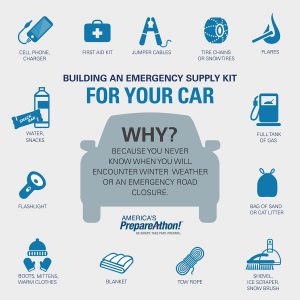Your pet is an important member of your household! The likelihood that you and your animals will survive an emergency such as a fire, flood, or tornado depends largely on emergency planning done today. Keep in mind that what’s best for you is typically what’s best for your animals.
Whether you decide to stay put in an emergency or evacuate to a safer location, you will need to make plans in advance for your pets. Below is a good starting point to ensure you pet is ready for an emergency.
- Food. At least a three day supply in an airtight, waterproof container.
- Water. At least three days of water specifically for your pets.
- Medicines and medical records.
- Important documents. Registration information, adoption papers and vaccination documents. Talk to your veterinarian about microchipping and enrolling your pet in a recovery database.
- First aid kit. Cotton bandage rolls, bandage tape and scissors; antibiotic ointment; flea and tick prevention; latex gloves, isopropyl alcohol and saline solution. Including a pet first aid reference book is a good idea too.
- Collar or harness with ID tag, rabies tag and a leash.
- Crate or pet carrier. Have a sturdy, safe crate or carrier in case you need to evacuate. The carrier should be large enough for your pet to stand, turn around and lie down.
- Sanitation. Pet litter and litter box if appropriate, newspapers, paper towels, plastic trash bags and household chlorine bleach.
- A picture of you and your pet together. If you become separated, a picture of you and your pet together will help you document ownership and allow others to assist you. Add species, breed, age, sex, color and distinguishing characteristics.
- Familiar items. Familiar items, such as treats, toys and bedding can help reduce stress for your pet.
For more information, please download Preparing Makes Sense for Pet Owners-Emergency Preparedness Pet Kit List (PDF) to find out exactly what items your pet needs to be ready.




